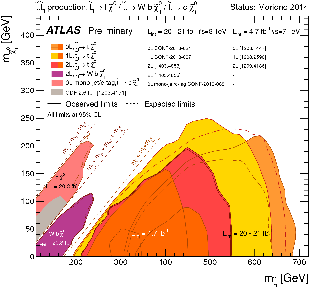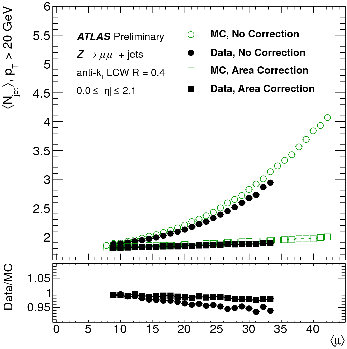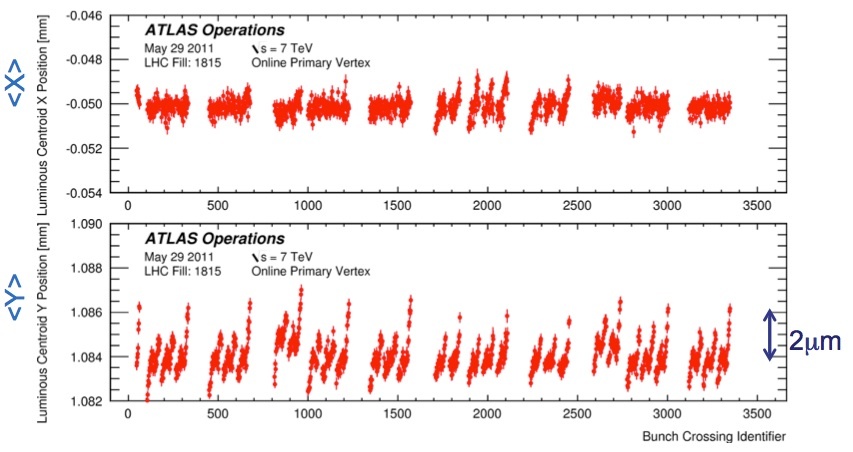The SLAC ATLAS group
The ATLAS group at SLAC is hosting a wide spectrum of activities on the ATALS experiment from detector and computing to explorations of LHC physics. ATLAS is supported as a top priority of SLAC HEP program, taking over from BaBar as the main high-energy physics activity. We have two professors (Su Dong, Ariel Schwartzman), several senior staff scientists (Tim Barklow, Rainer Bartoldus, Philippe Grenier, Richard Mount, Tim Nelson, Charlie Young), a Panofsky Fellow (Giacinto Piacquadio), 5 postdocs and termed staff, and 6 graduate students. In addition, there is also a strong team of professional staff and engineers with computing and detector expertise for our experimental involvement.
Physics
Our physics activities focus on searches for new physics and also developing several Higgs physics topics. Our SUSY search efforts are concentrating on searches of 3rd generation sQuarks through b+MET+jets final-state and dedicated direct "stop" search with 1 lepton+jets+MET, which are the most sensitive searches for gluino mediated and direct production respectively. SLAC group is also a major player in several areas of the next frontier for Higgs physics, including SUSY Higgs decaying to bbbar and boosted Standard Model (SM) Higgs decaying to bbbar, as well as SM Higgs decaying to Z+gamma. We have also already concluded some SM physics measurements of jet properties and event shapes, and top quark production with fully hadronic decay modes. Several exotic searches already yielded first results: gluinos which have come to rest in the calorimeter and decay during empty bunch crossings, excess like-sign leptons, a 4th generation quark, R-Parity violating Supersymmetry, light pseudoscalar Higgs in the NMSSM, long-lived particles in Hidden Valley models, "lepton-jets", while an updated lepton-jet search and search for "quirks" are currently in progress. Another key physics venue is the reconstruction of heavily boosted objects through jet substructure which is a distinctive new high energy playground at the LHC. Many tools are developed for use in these analyses, in conjunction with an extensive program on jet reconstruction/calibration effort which involves a leading role in ATLAS. There is also strong expertise in heavy flavor tagging within the group through both ATLAS effort and previous experiments. The SLAC group also has been carrying significant responsibilities on trigger operations and algorithm development which has close connections to physics strategy. SLAC is a Tier2 computing facility, and provides strong support for data analysis and simulation efforts.
Detector
The group plays a major role in the operation of the Pixel detector and the design/construction of the near term upgrades, building on SLAC's long experience in silicon detector technology. We are in particular involved in several areas of the Insertable B-Layer (IBL) project which is aiming for installation in 2013-2014. We are also very involved in the triggers and data-acquisition (TDAQ) system, working on the TDAQ software and infrastructure, as well as high-level triggers and online beam spot. SLAC is also a leading force in the muon Cathode Strip Chamber readout rebuild for 2013-2014. We contribute strongly to the simulation software, with expertise in GEANT4 modeling. SLAC has also engaged actively in several projects that will address the planned ATLAS upgrades, including the future tracking upgrade and TDAQ upgrades and near term muon small wheel upgrade. A major theme expands into various subsystems is data acquisition based on cutting-edge serial I/O + FPGA technology. Other activities include radiation hard pixel sensors, high speed data transmission etc.





